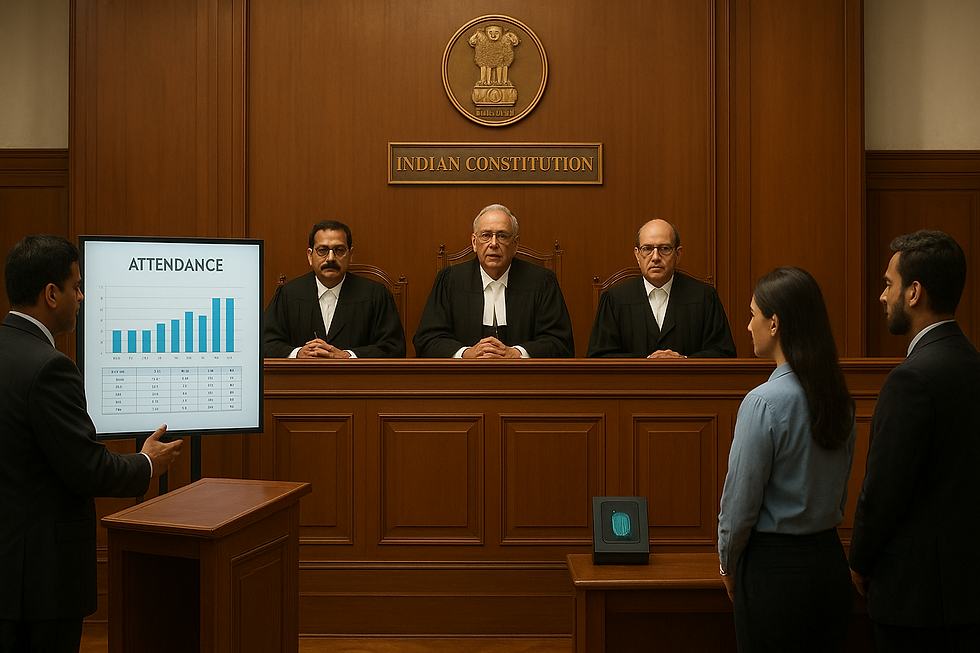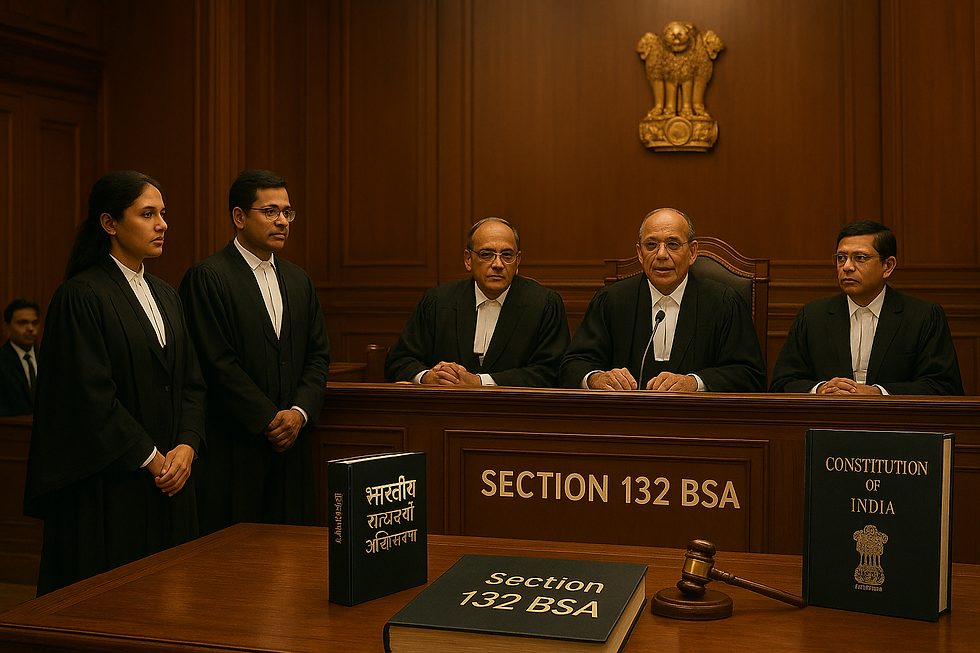Biometric Attendance Not Illegal Without Employee Input, Rules Supreme Court
- Lawttorney.ai

- 12 hours ago
- 3 min read
Case title: Union of India v. Dilip Kumar Rout and others, Civil Appeal No. 13572/2015.
Introduction:
On appeal, the Supreme Court overturned the High Court’s ruling, stressing that while consultation is preferable for some administrative reforms, it is not necessary for implementing efficiency-boosting systems.
The Court noted:
"The implementation of the Biometric Attendance System, intended to benefit all stakeholders, does not make the introduction illegal simply because employees were not consulted beforehand."
The court determined that the BAS guarantees accountability and transparency, in line with broader objectives of effective governance and contemporary administrative norms. Crucially, the Court emphasized that embracing technology must not be hindered by procedural formalities, particularly when it fulfils a valid administrative function.

Arguments Before the Supreme Court:
Before the Supreme Court, the Union Government argued that Swamy’s Manual had no legal authority and that no laws require consultation with employees before implementing attendance systems. The government asserted that the BAS aimed solely to update attendance tracking and improve punctuality and goals in line with administrative efficiency.
Notably, throughout the hearings, the employees admitted that the biometric system was ultimately beneficial to them. They did not present any new objections to its execution. Recognizing this, the Court noted:
“When the employees are fully supportive of implementing the Biometric Attendance System, we believe that no issues remain, and the department can proceed with the rollout of this system.”
Consequently, the Supreme Court granted the Union’s appeal, reinstating the legitimacy of the BAS circulars.
Legal Significance:
The ruling has broader consequences for public administration and labor management within government organisations. It specifies that technological changes do not need prior consultation with employees unless explicitly required by legislation.
By bolstering administrative discretion in implementing efficiency initiatives, the Court has established a distinct separation between employee rights and management authority. It indicates that courts will not intervene in administrative changes aimed at enhancing transparency, accountability, and efficiency unless they violate basic or legal rights.
Lawttorney’s Perspective: Law Meets Technology:
The decision closely reflects the values that Lawttorney aims to represent: the smart combination of law and technology to improve organizational efficiency while ensuring procedural fairness.
In a digital age where AI-powered solutions, biometric attendance (authentication), and data-driven management are swiftly becoming the norm, Lawttorney imagines a legal environment that is both technologically advanced and legally robust.
By facilitating automation, immediate data oversight, and data-driven compliance, tools such as Lawttorney guarantee that these changes happen within the context of legality and openness. Its AI research and document analysis abilities enable legal experts to quickly grasp the effects of these reforms, spanning statutory interpretation to administrative law precedents, guaranteeing that technology implementation stays constitutionally valid and ethically sound.
The Supreme Court’s decision aligns with Lawttorney’s belief that technology should enable, not substitute; assist, not control; and always function under human oversight.
Way forward:
The ruling by the Supreme Court in the Biometric Attendance System case represents a forward-looking endorsement of India's transition towards governance supported by digital technology. It emphasizes that consultation, though valuable, must not hinder modernization when reforms promote common good and institutional order.
Through the equilibrium of administrative effectiveness and legal examination, the Court has forged a route that fosters innovation while upholding legality, a vision that Lawttorney perpetuates by integrating AI-powered legal insights with human supervision to establish a more effective, ethical, and transparent justice system.
Empower Your Legal Practice with AI – Join Our Free Webinar!
Are you a legal professional looking to boost your efficiency and stay ahead in a competitive field? Discover the power of Lawttorney.AI – the cutting-edge tool designed to streamline legal research, automate tasks, and enhance productivity.
👉 Don't miss out! Reserve your spot in our FREE webinar and experience the future of legal practice today. Register Now




Comments